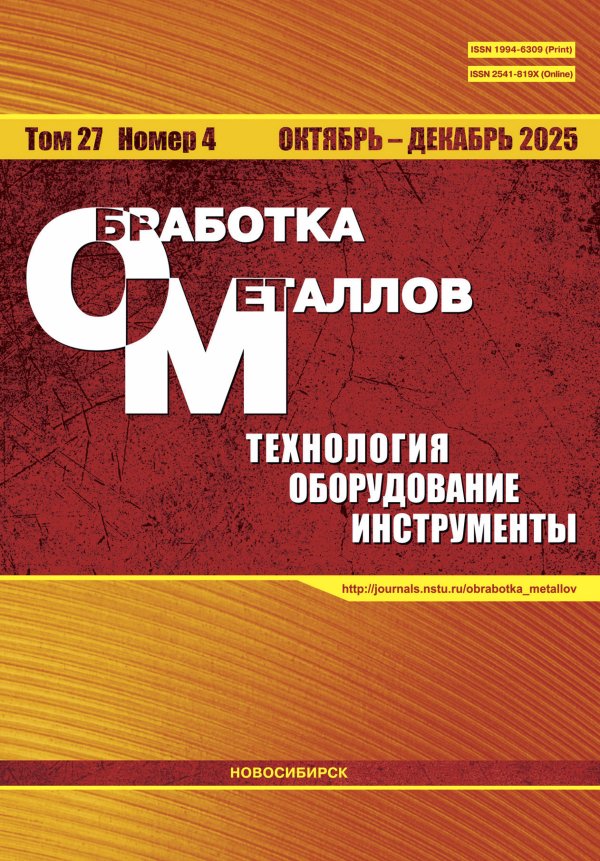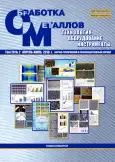Исследование влияния энергетических параметров режимов дуговой сварки покрытыми электродами и управляющих алгоритмов их изменения на характеристики ударной вязкости и трещиностойкости получаемых сварных соединений
- Авторы: Сараев Ю.Н.1, Гладковский С.В.1, Лепихин С.В.1, Каманцев И.С.1, Лунёв А.Г.1, Перовская М.В.1
-
Учреждения:
- Выпуск: Том 20, № 2 (2018)
- Страницы: 100-115
- Раздел: МАТЕРИАЛОВЕДЕНИЕ
- URL: https://bakhtiniada.ru/1994-6309/article/view/302069
- DOI: https://doi.org/10.17212/1994-6309-2018-20.2-100-115
- ID: 302069
Цитировать
Полный текст
Аннотация
Ключевые слова
Об авторах
Ю. Н. Сараев
Email: litsin@ispms.tsc.ru
доктор технических наук, профессор, главный научный сотрудник, Институт физики прочности и материаловедения СО РАН, litsin@ispms.tsc.ru
С. В. Гладковский
Email: gsv@imach.uran.ru
доктор технических наук, доцент, Институт машиноведения УрО РАН, gsv@imach.uran.ru
С. В. Лепихин
Email: lsv@imach.uran.ru
кандидат технических наук, Институт машиноведения УрО РАН, lsv@imach.uran.ru
И. С. Каманцев
Email: ks@imach.uran.ru
Институт машиноведения УрО РАН, ks@imach.uran.ru
А. Г. Лунёв
Email: agl@ispms.ru
кандидат технических наук, Институт физики прочности и материаловедения СО РАН, agl@ispms.ru
М. В. Перовская
Email: mv_perovskaya@inbox.ru
кандидат технических наук, Институт физики прочности и материаловедения СО РАН, mv_perovskaya@inbox.ru
Список литературы
- Физико-технические проблемы современного материаловедения. В 2 т. Т. 1 / редкол.: И.К. Походня и др.; НАН Украины. – Киев: Академпериодика, 2013. – 583 с. – ISBN 978-966-360-236-3.
- Liu C., Bhole S.D. Challenges and developments in pipeline weldability and mechanical properties // Science and Technology of Welding and Joining. – 2013. – Vol. 18, iss. 2. – P. 169–181. – doi: 10.1179/1362171812Y.0000000090.
- Shiga C. Problems in welded joints and systematic approach to their s solution in STX21 project // Science and Technology of Welding and Joining. – 2000. – Vol. 5, iss. 6. – P. 356–364.
- Development of new Low Transformation-Temperature welding consumable to prevent cold cracking in high strength steel welds / S. Zenitani, N. Hayakawa, J. Yamamoto, K. Hiraoka, Y. Morikage, T. Kubo, K. Yasuda, T. Amano // Proceedings of 2002 Symposium for Welded Structures of the Japan Welding Society. – Osaka, 2002. – P. 346–353.
- Ogino Y., Hirata Y. Numerical simulation of metal transfer in argon gas-shielded GMAW // Welding in the World. – 2015. – Vol. 59, iss. 4. – P. 465–473. – doi: 10.1007/s40194-015-0221-8.
- Kannengiesser Th., Lausch Th., Kromm A. Effects of heat control on the stress build-up during high-strength steel welding under defined restraint conditions // Welding in the World. – 2011. – Vol. 55, iss. 7. – P. 58–65.
- Поисковые исследования повышения надежности металлоконструкций ответственного назначения, работающих в условиях экстремальных нагрузок и низких климатических температур / Ю.Н. Сараев, С.В. Гладковский, Н.И. Голиков и др. // Наукоемкие технологии в проектах РНФ. Сибирь / под ред. С.Г. Псахье и Ю.П. Шаркеева. – Томск: Издательство НТЛ, 2017. – Гл. 5. – С. 134–202. – ISBN 978-5-89503-607-5.
- Лоос А.В., Лукутин А.В., Сараев Ю.Н. Источники питания для импульсных электротехнологических процессов. – Томск: Изд-во ТПУ, 1998. – 159 с.
- Saraev Yu.N., Bezborodov V.P., Selivanov Yu.V. Special features of the formation of protective corrosion-resisting coatings in pulsed electric arc surfacing of austenitic steels // Welding International. – 2010. – Vol. 24, iss. 11. – P. 884–888. – doi: 10.1080/09507116.2010.486199.
- Исследование влияния энергетических параметров режима дуговой сварки покрытыми электродами на стабильность тепломассопереноса / Ю.Н. Сараев, А.Г. Лунев, А.С. Киселев, А.С. Гордынец, Д.А. Нестерук, А.А. Хайдарова, Д.А. Чинахов, В.М. Семенчук // Сварочное производство. – 2018. – № 2. – С. 3–13.
- Investigation of stability of melting and electrode metal transfer in consumable electrode arc welding using power sources with different dynamic characteristics / Y.N. Saraev, D.A. Chinakhov, D.I. Ilyshenko, A.S. Kiselev, A.S. Gordynets // Welding International. – 2017. – Vol. 31, iss. 10. – P. 784–790. – doi: 10.1080/09507116.2017.1343977.
- Hibrid 2D–3D modelling of GTA welding with filler wire addition / A. Traidia, F. Roger, E. Guyot, J. Schroeder, G. Lubineau // International Journal of Heat and Mass Transfer. – 2012. – Vol. 55. – P. 3946–3963. – doi: 10.1016/j.ijheatmasstransfer.2012.03.025.
- Wang H., Colegrove P.A., Mehnen J. Hybrid modelling of the contact gap conductance heat transfer in welding process // Advances in Engineering Software. – 2014. – Vol. 68. – P. 19–24. – doi: 10.1016/j.advengsoft.2013.11.000.
- Impacts of torch moving on phase change and fluid flow in weld pool of SMAW / L.G. Tong, J.C. Gu, S.W. Yin, L. Wang, S.W. Bai // International Journal of Heat and Mass Transfer. – 2016. – Vol. 100. – P. 949–957.
- Походня И.К., Суптель А.М. Теплосодержание капель при сварке в углекислом газе // Автоматическая сварка. – 1970. – № 7. – С. 12–17.
- Улучшение структуры и свойств сварных соединений труб большого диаметра из низколегированной стали при импульсно-дуговой сварке / Ю.Н. Сараев, В.П. Безбородов, И.М. Полетика, А.В. Тютев, И.В. Никонова, Н.В. Кирилова, С.П. Севастьянов // Автоматическая сварка. – 2004. – № 12. – С. 34–38.
- Сараев Ю.Н. Обоснование концепции повышения безопасности и живучести технических систем, эксплуатируемых в регионах Сибири и Крайнего Севера, на основе применения адаптивных импульсных технологий сварки // Тяжелое машиностроение. – 2010. – № 8. – С. 14–19.
- Ланкин Ю.Н. Показатели стабильности процесса дуговой сварки плавящимся электродом // Автоматическая сварка. – 2011. – № 1. – С. 7–15.
- Кархин В.А. Тепловые процессы при сварке. – 2-е изд., перераб. и доп. – СПб.: Изд-во Политехн. ун-та, 2015. – 572 с. – ISBN 978-5-7422-4629-9.
- Рыкалин Н.Н. Расчеты тепловых процессов при сварке. – М.: Машгиз, 1951. – 296 с.
- Совершенствование технологии производства электродов УОНИ-13/55 / И.Н. Ворновицкий, С.А. Горбатов, Ю.А. Глушков, Р.Б. Ктиторов // Сварочное производство. – 2001. – № 1. – С. 42–44.
- Броек Д. Основы механики разрушения: пер. с англ. – М.: Высшая школа, 1980. – 368 с.
Дополнительные файлы







